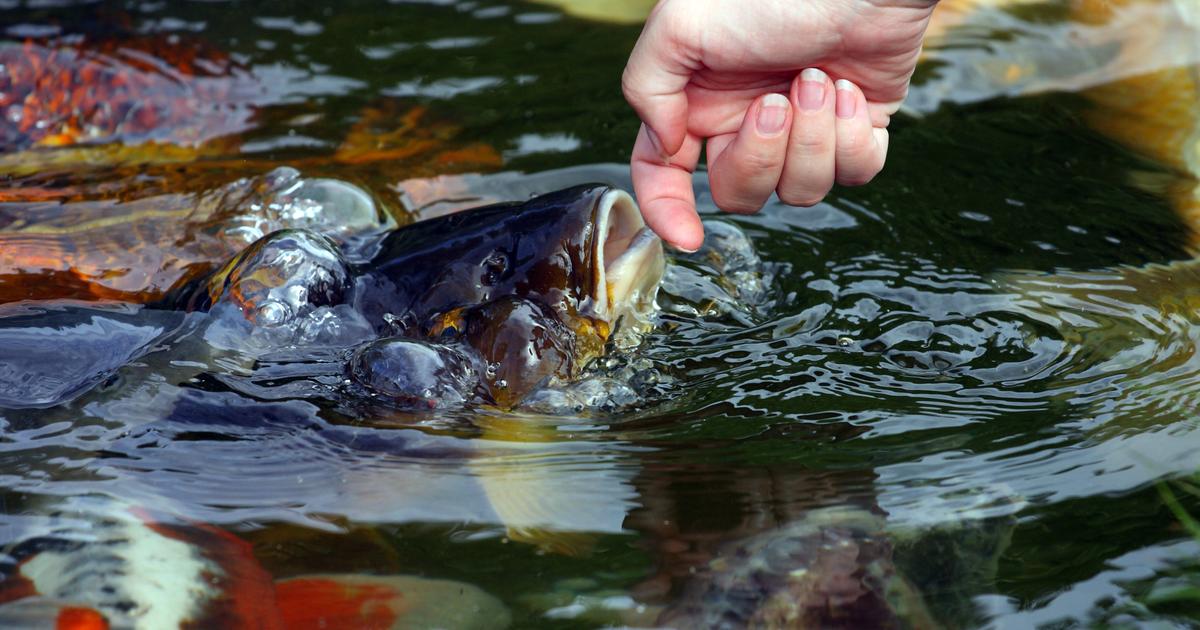They waddle with their fins from one end to the water between the aquatic plants, lead their life quietly.
But when winter arrives, the activity of pond fish dwindles and goes into “standby” mode.
To discover
January: what vegetables and fruits are in season?
What do fish do in winter?
The body temperature of fish varies with that of the water.
When it becomes too cool, they tend to go into hibernation and settle towards the bottom of the pool, where the temperature is less cool and the place calmer than near the surface.
Thus, they consume less energy during this period and hibernate.
Some will no longer move, while others will slowly come and go like koi carp or sturgeon.
Read alsoDo fish drink water?
Should the fish be fed during the winter and with what?
Most fish are on a diet during this period.
But some like sturgeons, cold water fish need to continue to be fed on a regular basis – between two and three times a week minimum.
To face the winter, you can, from September or October depending on the region and the climate, start giving them a food rich in proteins.
Thanks to this, they will begin to make nutritional reserves and their digestion will be facilitated, especially as the temperature risks disturbing the latter.
When the water does not exceed 10°C, it will be the moment to stop feeding the fish - except those of cold water like the sturgeon, which tends to stay towards the bottom of the basin and supports temperatures lower.
Read alsoDo you need permission to build a pond in your garden?
However, if during this period you notice that some of them point their heads towards the surface, you can give them some food adapted to the season and the low temperature to help them regain some strength.
Towards the end of winter, or when the thaw sets in, you can start feeding them again little by little, they will slowly come to the surface if they feel the need.
How to make sure that the fish do not suffer from freezing?
It is advisable to regularly check that the pool remains clean: no floating material and no formation of a layer of ice due to freezing.
The ideal is to be able to maintain a water temperature above 10°C in order, on the one hand, to avoid any freezing on the surface and, on the other hand, to less disturb the occupants and their metabolism in the pool.
In the event of ice formation following an episode of frost, it is recommended not to break it but to ensure that it melts or to wait for the outside air to take care of it naturally.
Read alsoGoldfish: habitat, food and health
To avoid favoring water cooling, it is recommended to disable or diminish waterfalls and other decorations that could disturb the occupants so that the water is calmer.
As for the pumps and filtration systems, they can continue to operate but on condition that they are installed in a shelter, in the event of frost.
Otherwise it is preferable to stop them just before the expected arrival of frost and possibly restart them if a thaw is expected over several days.
You can also install a bell or antifreeze cover, which aims to avoid any freezing but also to allow to evacuate certain gases which could prove to be toxic for fish, as well as aquatic plants.
Read alsoAquatic plants: how to plant them?
A small floating heater can also promote the good maintenance of the pond ecosystem and prevent the formation of ice on the surface, which can be effective in the event of a harsh winter.
To retain this extra heat longer, it is recommended to cover the body of water but leave a space, so that it is not directly on the surface.
If the frost episode lasts a long time, it is also possible to change part of the water so that it allows the already present water to be raised by a few degrees.
Advice
In order for the necessary gas exchanges to take place, it is important to leave part of the basin uncovered.
How to "relaunch" your pond after winter for the well-being of the fish?
First, check the quality of the water: the PH, the presence of certain bacteria.
If your pond has not been protected, be sure to remove all leaves, branches or other materials deposited on the surface by the wind or by an animal that has passed through your garden.
Finally, you can put the filtration and/or pump system back in normal mode so that the water circulates as before winter, as soon as the temperatures allow it (above 10°C).

